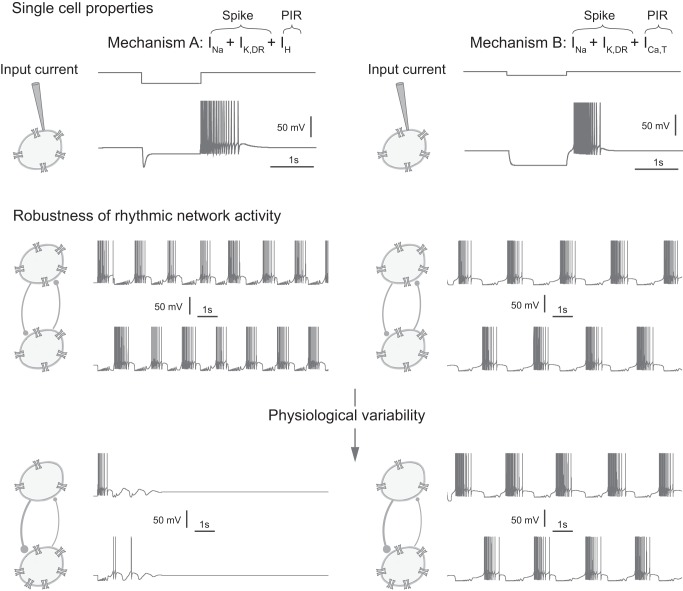Fig. 1.
Network rhythmic activities generated by distinct postinhibitory rebound (PIR) mechanisms strongly differ in their robustness properties. Top: mechanism A (left) generates a PIR with a hyperpolarization-activated cation (IH)-type current, and mechanism B (right) generates a PIR with a slowly activating T-type calcium (ICa,T)-type current (see materials and methods for a description of cellular models). The IH and ICa,T ion channel traces are shown, and the input current is applied externally as indicated by the cartoon. The input currents are different, to trigger PIRs of similar time duration from different mechanisms (see materials and methods for precise values). Middle: in a half-center 2-neuron network configuration, both mechanisms generate anti-phase oscillations. The density of ion channels in both neurons is identical, representing homogeneous cellular properties. Similarly, the synaptic connections are identical, representing homogeneous synaptic properties without variability. Bottom: physiological variability (see materials and methods for a description of variability) in both the synaptic (40% variability in ḡsyn) and cellular properties (left, 20% variability in ḡH; right, 20% variability in ḡCa,T) makes the oscillations unstable with mechanism A but not with mechanism B. The density of ion channels differs between the 2 neurons, and the synaptic connections are different, representing physiological variability in the cellular and synaptic properties, respectively.

